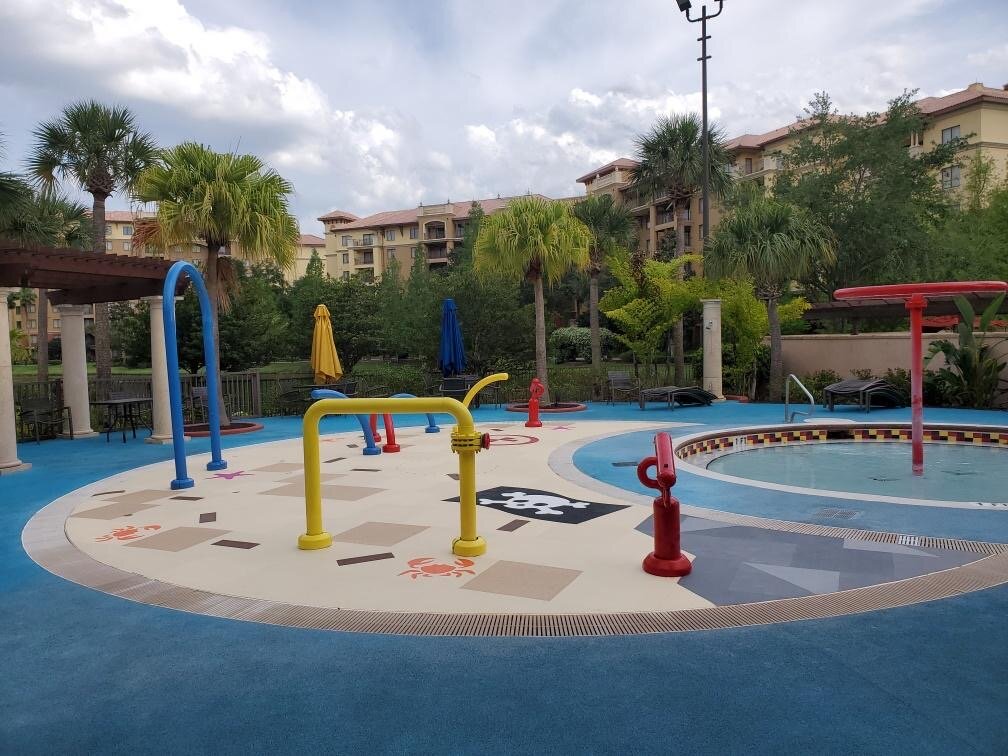Childhood is a time of limitless imagination, boundless creativity, and wild invention. It’s the one time in life when exploration is encouraged freely without the weight of daily responsibilities other than formal learning and helping with chores. The freedom of being young displays itself in many ways, one of which is free play.
Free play is critical to a child’s development. It enables them to problem solve, think critically, develop stories, and innovate. It can be seen in activities such as building Lego sets, playing house, creating structures and gaining achievements in video games like Minecraft, strategy forming in board games, and simply running through backyards envisioning new worlds. One method of free play continues to evolve as children explore aquatic environments, such as splash pads.
Children play at Lopesan’s Costa Bavaro Resort, Dominican Republic.
An octopus tentacle leads guests through a spray feature at Westfield Memorial Pool, NJ.
Historically, splash pads have included spray features that inspire thoughts of running under mountainous waterfalls, becoming pirates on a treasure-hunting adventure, or riding gigantic animals through vast seas. Far too often, these features have laid upon a blank canvas of abrasive concrete beckoning for inspiration. Covering this blank canvas with a specific flooring design is one way to further encourage free play. For example, a pirate-themed splash pad could round out the experience for children with an “x marks the spot,” different clues on the island to give more context, and a beach theme with blues symbolizing the water, tans symbolizing the shore, and aquatic creatures sprinkled throughout. It could even include hopscotch inlays to encourage children to jump from shape to shape to get across a certain section of the surface. This concept of adding theming to the flooring design can also help with zoning. For instance, a facility could denote a more adventurous zone with darker blues creating the “high seas” or a calmer zone with tans to portray a peaceful sand-colored beach.
Before: Disintegrating Pour-In-Place at Wyndham Bonnet Creek, FL
After: Life Floor’s Pirate Theme at Wyndham Bonnet Creek, FL
Alternatively, surfaces can display a more simplistic, geometric pattern to encourage a different kind of free play. For example, “the floor is lava” is a common game for children to play by jumping from color to color or chasing each other around by only touching certain patterns. These activities could augment the free play made available by the water features they encounter as they run around.
Children play on the hexagon surface at Parr Park, Grapevine, TX.
It should be noted that free play is only as free as children feel while engaging with the aquatic environment. Do they feel like they can tumble to the ground without fear of a bruised knee? Do they think they can jump around without losing their footing and slipping? Are they certain in their games that the only thrill is that of excitement and not of fear of injury?
Life Floor strongly believes that aquatic surfaces should lessen and, if possible, eliminate fear of major injury. It’s natural to get a couple bruises playing; however, if injuries halt play then something needs to change. Our company was founded on the idea that play shouldn’t be painful. Scrapes, cuts, and concussions shouldn’t be a common occurrence on splash pads and pool decks, especially when young children could be getting their initial introductions to aquatic free play. That’s why a central tenet of our brand is safety. Our product provides safer surfaces with cushioning, impact absorption, and slip resistance, allowing kids to play freely as they were meant to play: without fear.
For more information on the benefits of free play, please visit https://wetheparents.org/importance-of-free-play
If you would like to discover ways you can transform the flooring at your aquatic facility, please send us a message at solutions@lifefloor.com.



























